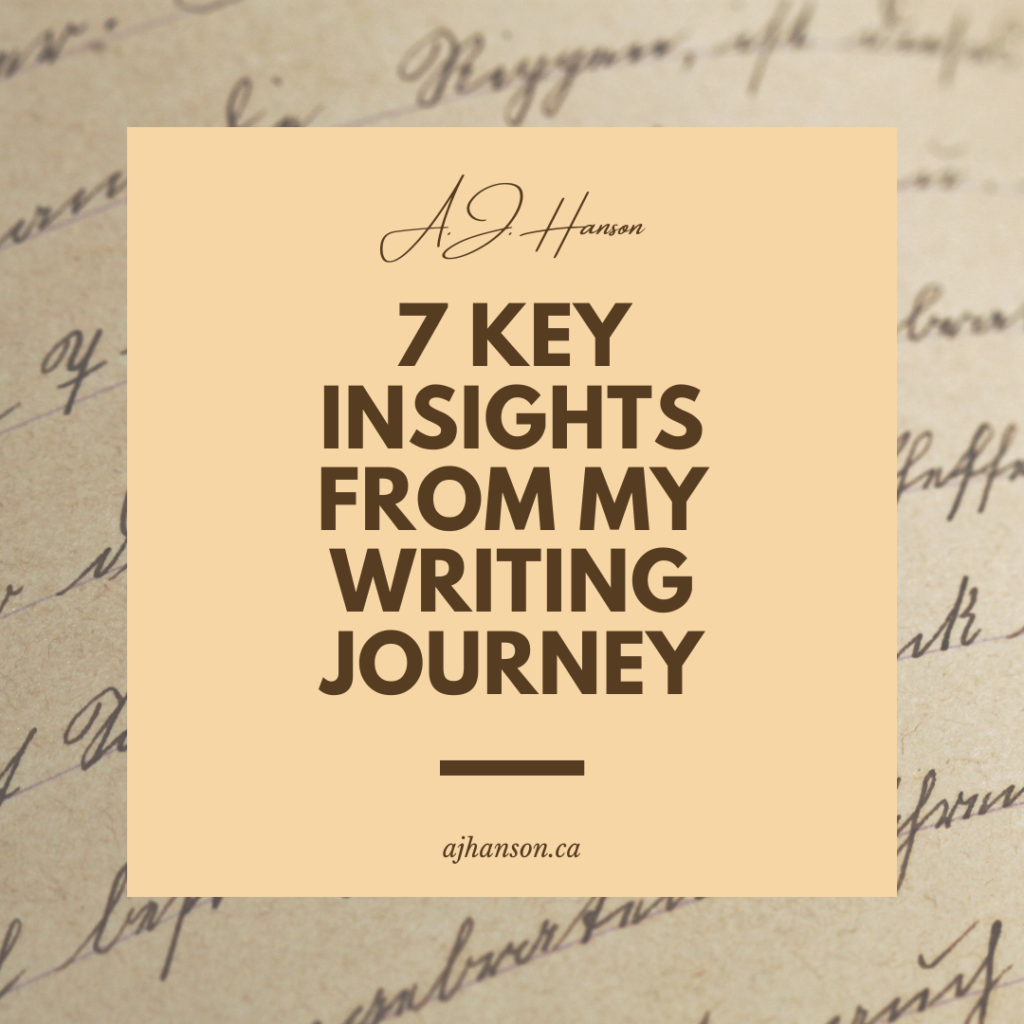Before I dive into my writerly tips, let me tell you a bit about my journey to get here.
Like many people, my writing journey started at a young age and I have wanted to publish a book for as long as I can remember. I’m not published yet, but I’m on my way. Writing is a war of attrition.
My writing journey started in elementary school. On a floppy A disk (I’m dating myself a bit here!) I saved file after file of story beginnings. I would visualize an image or a snippet of a scene and then scramble to write it down, but I could never get past the first couple pages. So my stories sat, abandoned on a now-anachronistic plastic square.
Then, I got it into my head that I could co-write a fantasy novel with a friend. We traded scenes, each writing a bit before passing it off to the other. Then we plotted out family trees and whole histories of wars and worlds. We got about 30 pages in before that was abandoned too.
As I grew up, I started to chase more “practical” futures than being a writer. I studied nursing and health sciences and a neat little career called a Diagnostic Medical Sonographer. I now work as an Echocardiographer where I hang out in a dark room and analyze human hearts while they beat. But even this didn’t make me feel whole.
In 2020, I gave in to my dream and signed up for NaNoWriMo – a caffeine-fueled foray into writing massive numbers of words every day of November. I started plotting my novel in July and by the time November rolled around I was ready to type my way to a 50,000-word story. So I did! My journal from this time is riddled with entries like, “Feeling happy today. This feels possible!” followed the next day by, “Was a total crying mess. Got 324 words. Hahaha.” But I pushed through and by November 28th, 2020 I was holding the first draft of the first full novel I’d ever written. Yes, it needs a major rewrite. But this process convinced me that I had what it took to follow this dream. On November 28th, before NaNoWriMo had officially ended, I started on the draft of my second manuscript, Parallax Error.
In April, I finished the first draft of Parallax Error and applied to get into The Writers Studio at Simon Fraser University. It’s a one year Certificate of Creative Writing program. I wrote out my application. Then re-wrote it. Then re-wrote it again. Submitted it, and was chosen to be in the Young Adult and Speculative Fiction genre group.
I am currently working on editing Parallax Error while I write the first draft of a new novel while living the dream in writing school.
Alright, now for the part you’ve been waiting for.

Through my journey, I’ve learned some key lessons:
1) Writing doesn’t have to be a solitary activity.
I’m an introvert. I love my me-time. But I also need the support and motivation that comes from connecting with a group of emerging writers who are struggling with the same things I am and undergoing the same journey. I think this applies in many fields, but particularly in writing; the best way I’ve found to crush imposter syndrome is to surround yourself with people who support you and believe in you.
Through NaNoWriMo, talking to friends (I was surprised to find out how many people I already knew who write!), and writing school at SFU, I’ve been fortunate to meet other writers. We hold each other accountable, share resources and critique each other’s work.
Connecting with a group of other writers is the most valuable step I’ve taken in this whole process.

2) Even when there isn’t time to write, there’s time to write.
I wrote my first manuscript when my twins were under two years old and my daughter was three. I was working weekends at the hospital, caring for my chickens and ducks, and plotting my next season of gardening. Looking back at it, there’s no way I should have been able to write as much as I did.
I’ll share tips in a later post on how to make time for writing even when it seems impossible, but the short version is that I found the minutes in a day where I could write even if it was less than ideal. I wrote on my phone while waiting at the doctor’s office or at 3 A.M. when I couldn’t fall back to sleep. I carried my notebook with me everywhere and as soon as the kiddos were asleep, I fired up my computer.
It’s possible to find time to write. It just requires self-awareness about what works for you and how you usually spend your day.

3) Writing is a mindset.
The best thing you can do for your daily writing practice is to be present in the moment. Notice the little things. Allow yourself to wonder and dream about the world. When I started to take myself seriously as a writer, I bought a book called The Art of Noticing by Rob Walker (I highly recommend it!) and I worked my way through the exercises that resonated with me. Adopting this mindset has given me a richer life in addition to providing more fodder for writing. Win – Win!

4) Burnout is real. Even in creative endeavours.
Twice now, I’ve experienced writing burnout. It’s easy to read the writing advice that tells you to write 2000 words a day and I’m sure that works for some writers (I’m looking at you Stephen King!), but that’s not my process or the process of many of the other writers I know. As nice as it is to hit that epic word count, it’s crucial as a Creative to also listen to your body and take care of your mental health. One thing I wish I’d known when I started this journey is that even though I am capable of writing 50,000 words in a month, it would take me just as long to write that much at my own pace because I end up so burnt out I need at least two months off before I can manage to write anything half decent again.

5) Writing isn’t “just a hobby.”
Writing is an expression of your soul. Every writer I know has been afflicted with the NEED to write. I’m a better parent and a better human when I take the time to write and I can certainly notice when I don’t!
If you also have the drive to write, take yourself seriously and go for it. The benefits reach far beyond the words on the page.

6) Creative output requires creative input.
This is another way of saying that to be a writer, you need to be a reader. But I think it’s more than that. Yes, reading will show you what you enjoy as a reader and teach you how to implement those things in your own writing. But as the saying goes, art begets art. I believe that to continue to output creatively, the soul needs the occasional refill! Take time to appreciate other forms of art, whether by reading or enjoying visual forms of art. And if you’re fortunate enough to be able to do so, go outside and just take in nature. As far as I can tell, nature is the highest form of art.

7) Every writer’s journey is different.
Thank you for allowing me to be part of yours!
I’ll be posting writerly tips, updates on my journey, and information on topics I research for my novels. Subscribe to my mailing list for the occasional update.





